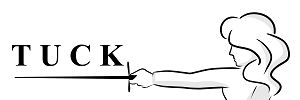Rodrigo Suarez photo
By
Ricardo Swire
Repression is “the action of subduing by force.” At the end of 2017 more than one hundred and fifty Venezuelan residents were killed by “security forces,” while protesting against the government. Repression in Venezuela not only comes in the form of batons, tear gas, rubber bullets and gunshots. Approximately 60% of the tear gas canisters recovered from protest in Caracas were labelled “Condor”, 40% produced by La Compania Anonima Venezolana de Industrias Militares (CAVIM) joint projects with Spanish company “Falken S.A” and others; the tear gas supplied between 2002 and 2011, compliments Condor Tecnologias Nao Letais in Brazil, via a US$10 million contract.
The National Police, originally established with sweeping powers across Venezuela, has proven to be the country’s most repressive internal security force. The Venezuelan government mobilized an extensive propaganda apparatus that includes newspapers, radio stations, six TV stations and hundreds of websites. These social image manipulations and projections form part of the Venezuelan president’s concerted campaign to demonize protest leaders as shadowy fascist cabals, in cahoots with American imperialists. After thirteen deaths, eighteen suspected cases of torture, more than five hundred arrests and jailing thirty-six political opposition members, the nationwide paroxysm of citizen anger is now etched in the Venezuelan government’s psyche.
Inexhaustible supplies of teargas and plastic bullets have been the administration’s response, 224-VN-4 model Armoured Personnel Carriers (APCs) or “Tanqueta” and paramilitary “shock troops” on motorcycles deployed. The Tanqueta is made by Chinese Defence Company NORINCO that also supplied several other types of mechanised weaponry and equipment. The Venezuelan government bought the GNB one hundred and ninety-four of the Chinese APCs. In 2012 one hundred and twenty-one were purchased, followed by seventy-three during 2014’s social unrest. As one of the Venezuelan government’s crowd control tactics its Air Force dispatched Russian built Sukhoi fighter-jets to intimidate residents, by circling above San Cristobal a hot-spot.
Caribbean intelligence officials refer to evidence of National Police, National Guard, National Armed Forces and “Colectivos” members participating in fueling the violence. “Colectivos” or combination of eight, heavily armed, civilian militia is outfitted and trained by the Bolivarian National Guard (BNG). 2017 reports described how the armed pro-government group extorts select residents and business owners. Internal security data connected Colectivos members to assassinations, theft, drug trafficking and the contraband food trade.
Within Venezuela’s National Guard, “Cartel of the Sun” invisibly manages smuggling routes along the border with Colombia. The National Armed Forces or Army controls mining in the state of Bolivar. Rogue soldiers are directly involved in coltan, gold, precious stones extractions and drug trafficking. The Venezuelan president’s military strategies and internal security tactics are privately influenced by Cuban intelligence officers, who occupy positions normally reserved for members of a national security force.
Thousands of Cubans are assigned across the western, central and southern states of Merida, Lara, Aragua, Tachira, Miranda, Caracas, Carabobo and Barinas. “Cuban internationalists” have also computerized Venezuela’s public records and subtly control the issue of identification papers and voter registration. Cuban agents are stationed at Venezuelan air and sea ports. Some purchase Venezuela’s military equipment and are employees of the Maracaibo airbase, one of seven domestic airbases.
Cuban intelligence officers’ attendance at Venezuelan Armed Forces strategic planning meetings is standard. According to a former Venezuelan Armed Forces General and Minister of Defence, “the Cubans modernized both SEBIN or Bolivarian National Intelligence Service and the Military Intelligence Unit. Cuban operatives additionally established a special unit to protect Venezuela’s head-of-state.”
On April 4, 2017 the Organization of American States, (OAS) Secretary-General denounced Venezuela’s repression against protestors. The OAS memorandum highlighted Venezuela’s protests are “violently suppressed by Bolivarian National Police, which included shock forces in the service of the authoritarian regime installed in Caracas.” Venezuela’s government was reminded “protests were summoned under protection of the right of free expression and freedom of protest.”
Ricardo Swire
Ricardo Swire is the Principal Consultant at R-L-H Security Consultants & Business Support Services and writes on a number of important issues.



No Comments Yet!
You can be first to comment this post!